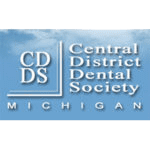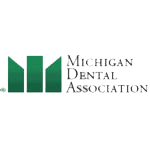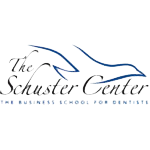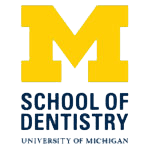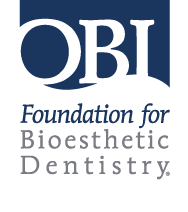
Exclusive TMJ/TMD Care for Lansing Patients
Bechtel Dentistry is honored to extend our TMJ/TMD expertise for patients throughout the Lansing area. All of our individualized treatment plans embrace our holistic approach, offering minimally-invasive, yet effective methodology. Our team is here to provide the support you need for improving your TMJ health and achieving long-term relief from the myriad of symptoms produced by TMD.
What is TMJ?
The TMJ or temporomandibular joint is a unique joint in your body that allows you to open and close your mouth, allowing you to drink, eat food and take a large deep breath of air. It’s unique because it functions in a hinge-like fashion. Imagine a door opening and closing on a hinge, allowing your jaw to move back and forward or slide up or down a boney slope in your skull known as the eminence. It is even more unique because it has a twin joint on the other side that shares a common link with a wishbone-shaped bone known as your lower jaw. These two twin joints connect your lower jaw to your skull. One side of the jaw joint’s function affects the opposite side’s function and the range in mobility of the jaw is affected by the muscles that attach to it and the jaw bone, the disk of cartilage that pads it, the teeth, and the angle of the eminence of the skull. It is a fairly complex piece of anatomy.
TMJ vs. TMD
“TMJ” is commonly used to define a dysfunction or disorder of this complex joint, the chewing muscles connected to it, and or the bite. Patients may notice symptoms like headaches (sinus, or migraine), stiff muscles in the head and neck, Ear pain or ringing, and or tooth problems. Typically these symptoms are caused by some type of instability or imbalance in force distribution in your jaw joint.
“TMD” is commonly used dental terminology to define various symptoms which can result, and be different from person to person, when the chewing muscles, the occlusion or bite, and the jaw joints do not work in harmony together, as they are designed to do.
Symptoms of TMD or TMJ Dysfunction
Problems that can arise when these joints are not working properly are numerous, such as:
- Popping or clicking noises in the joint
- Pain or soreness on opening or closing of the jaw
- Limited opening or even locking of joint when opening
Often times muscle pain or spasms can occur with displaced jaw joints. The nerves and sensory connections are complex in this area and it can be difficult for a suffering individual to associate the problem with their occlusion or bite. For example:
- Headaches
- Dizziness
- Pain behind the eyes
- Ringing in the ears or ear pain
- Grinding and or clenching of the teeth
- Chipped, broken, worn, or even loose teeth
- Neck, shoulder, or back pain
- Tingling or numbness in the extremities (fingers)
The primary source of the problem can be the bite, the muscles or the joints or a combination of these. Often times physicians are unable to diagnose the problem and suffers go un or miss diagnosed and treated.
What Can Cause TMD?
Temporomandibular Joint

Anatomically, the jaw bones with your teeth, the jaw joint, and the chewing muscles allow you to open and close your mouth. These structures perform very specific functions and must work in sync with one another when you speak, swallow or chew. The teeth and the temporomandibular joints work at opposite ends of this system. The joints attach your lower jaw bone to your skull. Various chewing muscles attach to the joints and the skull, allowing for mobility and specific movements. As you can see, this is a complex system. The teeth, bones, muscles, and joints must work in harmony with each other. Any problem that prevents this from happening can result in temporomandibular dysfunction or TMD.
I Have a “Bad Bite”
One of the most common causes of TMD is the result of the relation of your teeth or bite. If the bite is not right, it can cause problems with both your muscles and joint. So how does this happen? When your upper and lower teeth come together in a way that provides stable bracing of the jaw against the skull, the entire temporomandibular system tends to be stable. However, if the upper and lower teeth meet in a fashion that does not allow the lower jaw bone to brace or rest into the joint in the proper position, this can cause a multitude of symptoms and problems to occur. The most common reason that teeth do not meet together properly, is the result of misaligned teeth, or the result of a missing tooth, or a bite that has shifted and changed as a result of tooth wear from grinding or uneven contacts or force.
Muscle Pain or Spasms
Disc displacement in the joint can lead to an unstable bite which causes your muscles to work a lot harder than they are designed to do. Have you ever gone to the gym and lifted weights? If you do 20 reps with a moderately heavy weight dumbbell doing curls, typically toward the end of that set you can feel your bicep muscles starting to stiffen and shorten. The same effect occurs with our chewing muscles. If they get overworked they build up lactic acid and become stiff and painful. Your teeth come together each time you swallow and the average adult swallows 600 to 1000 times a day. If your bite is off it creates a vicious cycle of worsening muscle spasms and the constant contraction can result in tissue damage, tenderness, pain, leading to stress, tenseness, and making you feel miserable.
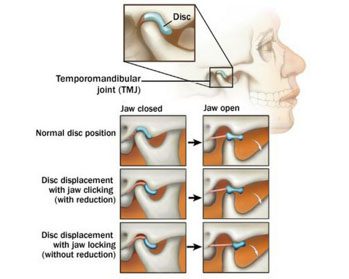
In addition to causing muscle problems, the relation of the teeth also affect the position of your joints. Like a lot of other joints in the body, the jaw joint is essentially a ball and a socket. If working properly the two bones- the condyle of the jaw and the upper jaw bone of the skull do not touch in function. There is a pad of cartilage that sits between them, known as the disc. This disc cushions and allows for smooth gliding function when working properly. The disc is held in place on one end with a ligament and the other end is attached to a muscle. Now if the muscles are active too often, usually caused by an unstable bite, the muscle will pull the disc out of alignment. It can cause the attachment of the ligament on the other end to stretch or tear. If the disc gets pulled out of position the ball or condyle can rub against the tissue in the socket that has pain fibers causing chronic discomfort. Usually, disc displacement is progressive process of breakdown. Early disc displacements are mild and the result is that you may notice popping or clicking sounds when you open and close your jaws while chewing or yawning. If the disc is displaced more severely or completely the result can be severe pain or even locking of the jaw joint in an open position. This can lead to permanent damage in the joint. The disc and the bones can become permanently altered, eventually leading the bite to become permanently altered. This can also cause the body to attempt to compensate or adapt to the dysfunction by working muscles in the head, neck, back, and shoulders too often. This can lead to more broad range muscle changes or changes in body posture. So as you can see, an unstable bite can have a domino effect leading to muscle fatigue and pain in the head, neck, shoulders, back, as well as jaw joint disc displacements.
Chewing System Dysfunction or Instability
When people think of losing teeth, most often people state that tooth decay (cavities), or gum disease (periodontal disease) are the leading causes. It is correct that tooth decay and gum disease are leading causes of tooth loss. But there is a third reason people lose their teeth that is often overlooked, on this list. It is a silent oral disease that people often assume is a normal part of the natural aging process. Chewing system instability often leads to premature and excessive tooth wear, loose teeth, cracked teeth, sensitive teeth, jaw and joint problems and early tooth loss.
A bite that is not balanced properly causes premature wear or loosening or cracking of the teeth because it causes an imbalance in force distribution. One of the pioneers who lead the study of the bite and wear and jaw joint dysfunction always used to say, “When bone, teeth, and muscles war against one another, teeth are always the losers”. It can be similar to uneven wear on car tires when the suspension is not aligned properly. Eventually, the tire with the most wear on it will give.
So how can you know if this is a problem for you if it is a silent cause of tooth loss? There are some signs and symptoms to look for that may indicate an unstable chewing system:
- Teeth that are sensitive to hot, cold or biting
- Teeth that are broken, cracked, chipped, or worn down
- Loose teeth
- Areas in the mouth or numerous teeth that have had root canals
- Patterns of clenching or grinding of the teeth
- Gum recession around certain teeth
- Abfraction areas on teeth: wedge-shaped notches on the sides of the teeth up at the gum line
- Severe bone loss specific to one or several teeth in a local area
- Pain in the teeth or jaw joints when chewing
- Frequent headaches and or facial pain (head, neck, shoulders, or upper back)
- Teeth or dental work that tends to fracture and break
Your system is designed to have your back teeth fit together similar to a jig saw puzzle. Your back teeth have peaks or cusp tips and valleys or fossae. In a stable bite your back teeth fit tightly into the opposing teeth (peaks and valleys line up) while the lower jaw bone condyles (ball joints) fit completely into their sockets (fossa of the skull). This allows the system of teeth, gums, bone, joints, and muscles to fit together in harmony, minimizing force and stress on the chewing system. The human bite can create force in the magnitude of 900 pounds per square inch, which is more than enough to cause damage if the system is not properly aligned. The guidance of the system has to be aligned properly to have stability as well. The upper front six teeth have to properly overlap the lower front six teeth to allow them to guide out in forward and back and side to side chewing motions, so they can protect the back teeth from excessive forces. This protection has to allow the back teeth to clear out and not rub against one another. If the front six teeth are not in the proper alignment or are severely worn down it will allow the back teeth to rub against one another and this causes hyperactive muscle activity which can cause the back teeth to crack, break, have pain or sensitivity, in addition to muscle and or jaw joint breakdown.
So, How Do We Treat an Unstable Chewing System?
If your goal and desire is to be free of dental disease, we will need to work together to study and evaluate your chewing system. In order to treat an unstable chewing system, some records and information need to be gathered. Typically the process starts with a detailed examination of your muscles, jaw joints, and bite to gather detailed records of your current condition. Additional information including x-rays and mounted casts of your teeth are also gathered. In most cases, Occlusal Splint Therapy is required to deprogram and relax the strained chewing muscles and allow the jaw joint to properly seat into the socket. This process typically takes time as years of instability and imbalance may need to slowly adapt to stabilize. The splint functions to help diagnose the problem, as well as treat it. Once records verify that your jaw is seating into the joint properly, we can work together on developing a treatment plan to find the most conservative way we can to stabilize your chewing system. We may utilize custom oral appliances or other biocompatible techniques for achieving long-term success. Everyone is unique and the treatment needed depends on your wants goals and desires as well as what is feasible. Our TMJ/TMD individualized treatment plans uphold our standard for holistic wellness.
Schedule Your TMJ/TMD Appointment Today!
Dr. Bechtel and our Lansing, Michigan dental team are committed to providing exceptional care and empowering our patients with information about their dental health. If you have any questions about our TMJ/TMD services or would like to schedule an appointment, we invite you to contact us at 517-882-7132. Our holistic dentistry offers comprehensive treatments that promote overall wellness for our patients living throughout Lansing, Holt, Okemos, Mason, Grand Ledge, Dewitt, Haslett, Williamston, St. Johns, Charlotte, Eaton Rapids, East Lansing, and Potterville.





